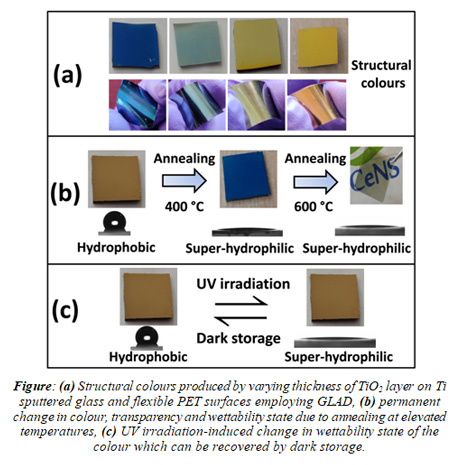 Self-cleaning, nontoxic artificial colours developed by scientists mimicking colouring technique found in nature in peacock feathers, butterfly wings and gem opals may soon brighten up in textiles, automobiles, and decorations.
Self-cleaning, nontoxic artificial colours developed by scientists mimicking colouring technique found in nature in peacock feathers, butterfly wings and gem opals may soon brighten up in textiles, automobiles, and decorations.
Dyes and pigments which we depend on for colouring are not safe for human health and at the same time suffer with stability issues as it degrades with thermal energy, humidity, and UV exposure and so on. Nature itself gives the solution and generates colours by means of a technique called structural colours in fascinating artworks such as peacock feather, butterfly wings, and gem opals.
Scientists from the Centre for Nano and Soft Matter Sciences (CeNS), an autonomous institute of the Department of Science & Technology (DST), Govt. of India, have fabricated structural colours artificially. The structural colours were produced by deposition of nanorods and thin films of titanium dioxide (TiO2) on titanium sputtered hard and flexible surfaces utilizing a method known as glancing angle deposition (GLAD). The CeNS team showed that the colours are due to interference phenomenon and can be manipulated by varying thickness and refractive index of the TiO2 layer. Further, they predicted that aluminium, nickel, cobalt and copper can be used as an alternative to titanium. The research work have been published in the journal ‘Applied Optics’ recently.
Although structural colours are stable, the environmental pollutants sit on the surface of the structural colours and redefine the hue. So to maintain the hue, regular cleaning of the surface is needed, which is cumbersome and costly. The lead author, Mr Gaurav Shukla, says that they have solved this problem by making the surface of the colours superhydrophilic, making it a self-cleaning surface. A permanent self-cleaning state (tested up to 1 year) has been obtained with controlled heat treatment at elevated temperatures. Heat treatment at controlled temperatures has also helped in tuning colours and opaqueness of the colours on glasses.
CeNS team has further shown that the structural colours can be transformed or tuned dynamically with the help of volatile organic compounds (VOCs) like ethanol vapour enabling their usage as optical sensors. The structural colours can also be used for optical information encryption.
Publication: DOI: 10.1364/AO.404553.
For further details, Dr S. Angappane (Email: angappane[at]cens[dot]res[dot]in) can be contacted.






























